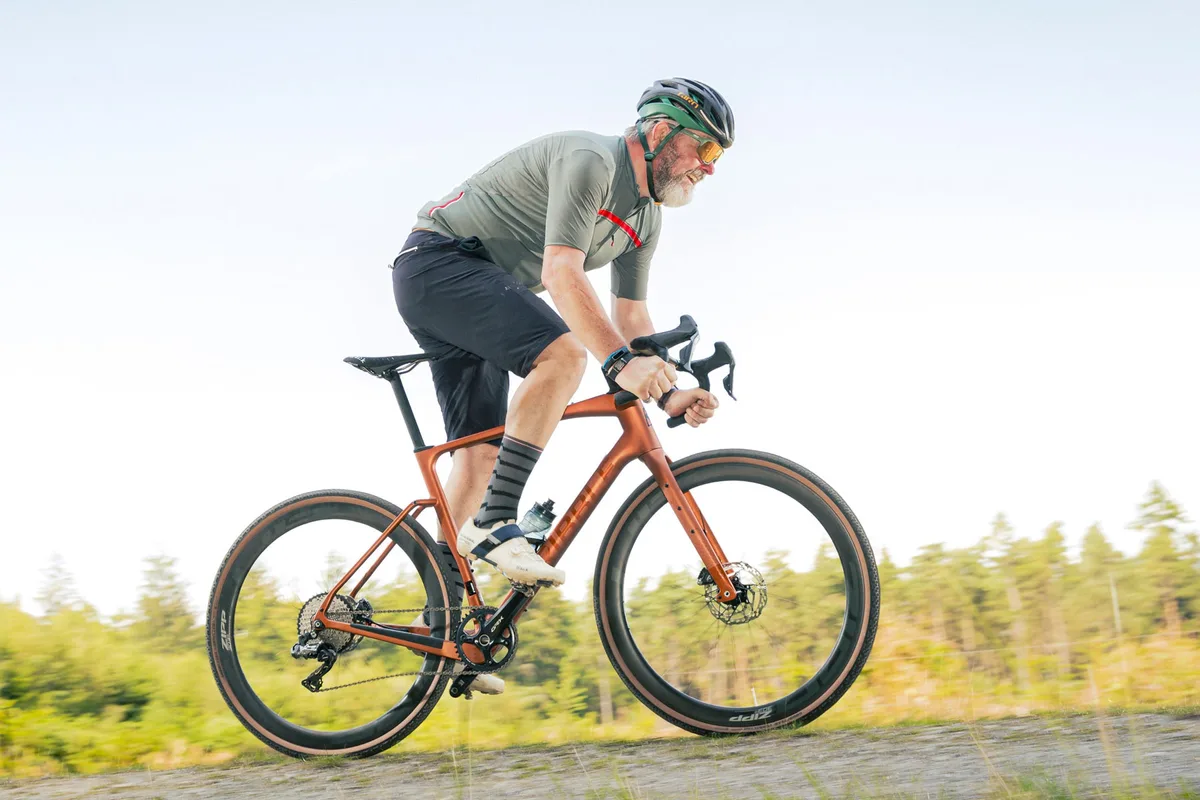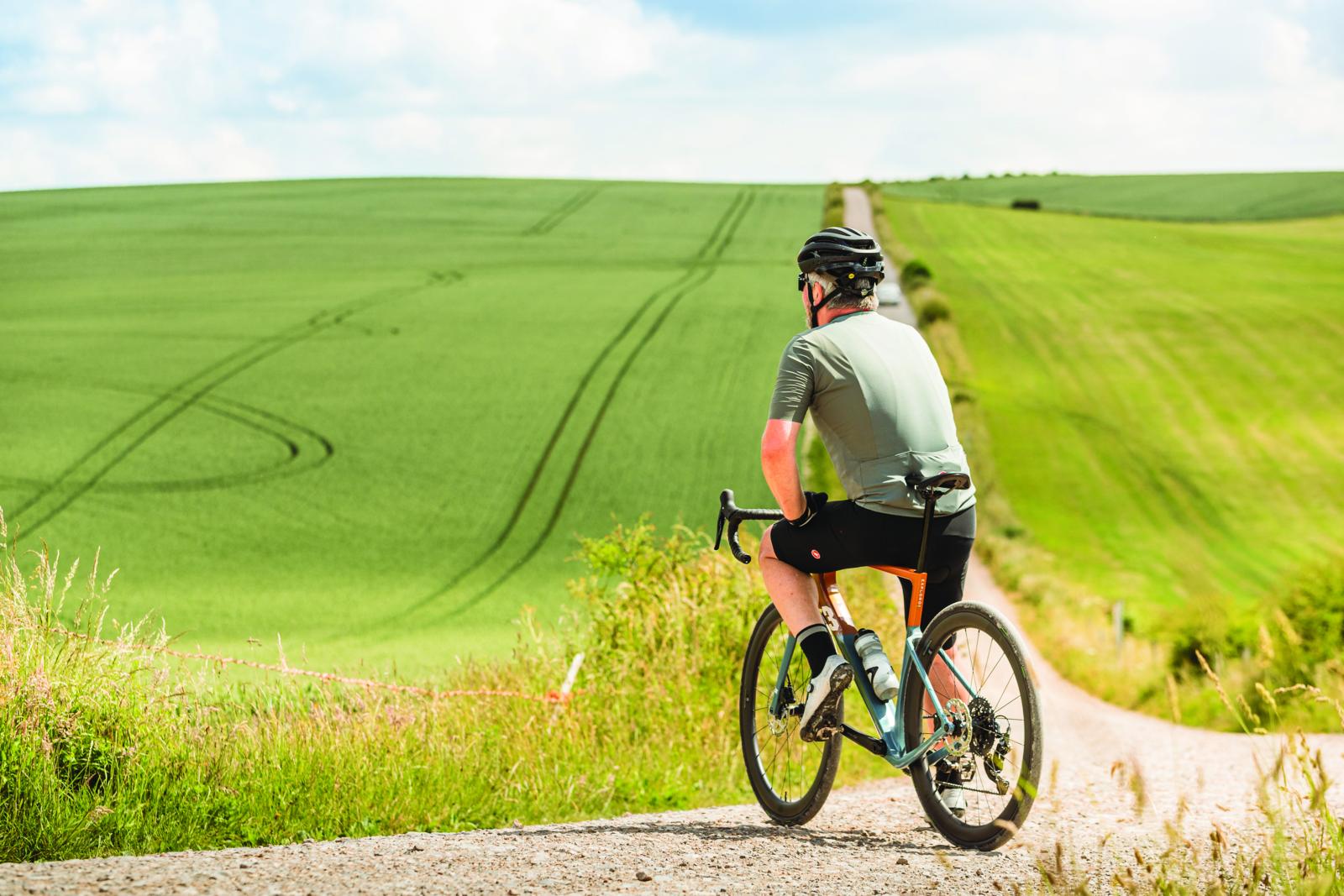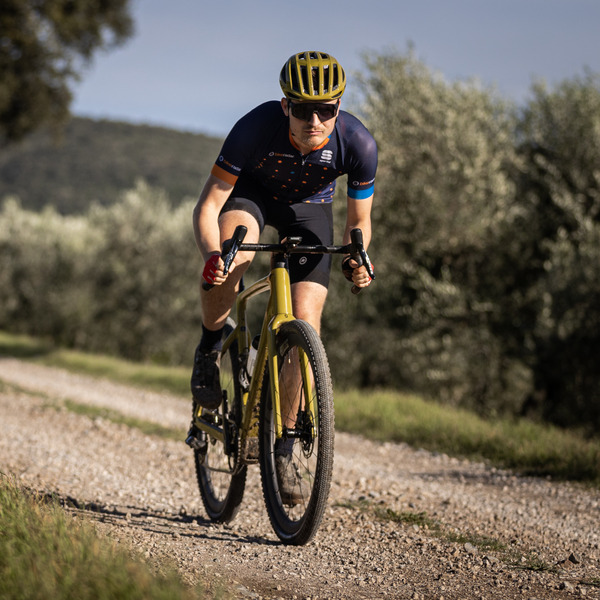Whether you’re a go-fast gravel racer or lean more towards the shreddy end of gravelling, one of the great pleasures of gravel bike ownership is the opportunity to spec and build your bike to suit your mores.
But among the many compelling and worthwhile upgrades are those that don’t quite cut the mustard.
Following our lists of the worst road bike upgrades and worst mountain bike upgrades, we round out our trio of sore memories with the gravel tech we’d rather forget.
From controversial opinions on helmets and tyre inserts that promised the world but failed to deliver to disappointing mechanical disc brakes, these are the gravel bike upgrades we’d recommend you avoid.
Tom Marvin – roadie helmets

As a committed mountain biker, I know what it’s like to ride in varied conditions – wet, muddy, dry and even sunny.
When I first came to gravel riding, it felt very much an offshoot of road riding. As such, I equipped myself in Lycra, racy shoes and, of course, the de-rigueur road bike helmet.
Lightweight, well-vented and peak-less, I looked the part and received the affirming nods of other curly-bar enthusiasts as I tucked over the bar in an uncomfortable aero stance.
While I accept the fact that roadie-style kit is probably the most appropriate for gravel riding, I have thrown my peak-less lids into the depths of my garage.
As I discovered, peaked helmets are vital for keeping sun and rain out of your eyes.
In the UK's long, dark, dank winters, when the sun does come out, it sits low in the sky, piercing my vision as it flashes between breaks in the hedgerow – or when I’m desperately trying to get home before darkness consumes all. A helmet peak would make all the difference here.
I can guarantee someone will be screaming at me that ‘the roadie cap exists for a reason’.
I will concede this could solve my problem, but they are a poor relation of the helmet visor.
Their cloth construction soaks up sweat, preventing it from evaporating and leaving your head extraordinarily sweaty and soggy.
They impact the fit of my helmet – a device designed, no less, to keep my brain as safe as possible.
When it’s warm, all that lovely helmet ventilation is thrown into the wind, and thus I sweat even more.
Gravellers – you’ve embraced mountain bike tech already. Decent brakes, grippy tyres, tubeless setups and, as I’ve been banging on about for years, some of you have even realised that suspension makes sense off-road.
So, embrace your MTB brethren again, and adopt the peaked mountain bike helmet en masse. You will not be sorry.
Liam Cahill – ‘gravel’ shoes

Pedalling a bicycle, be it from the church of mountain, road or gravel, is a relatively similar and simple task. You turn your legs and the bike moves forward.
So why, when a plethora of quality road shoes and mountain bike shoes exist, did the industry feel the need to invent gravel shoes? Greed and profiteering would be my answer.
You may argue that gravel shoes suit certain hike-a-bike situations better than a stiff cross-country shoe, but the argument is, in my opinion, flawed by one word: cyclocross.
Cyclocross riders have for years taken cross-country mountain bike shoes and run with them, quite literally. Sections of a course can be too muddy, off-camber or steep to ride, leaving you to continue on foot.
To my mind, some brands seem to simply slap a dusty colour on an existing product to make it ‘gravel’.
Small differences may be visible in the spec sheets – a marginal weight saving here, a slightly more robust upper material there.
But will these minor changes improve your gravel riding? I doubt it. So stick to mountain bike shoes for adventure gravel and road shoes will do nicely for faster riding on open gravel roads.
Jack Luke – tyre inserts

I really, really wanted to like tyre inserts.
On the face of it, tyre inserts offer a passive, relatively low-cost and easy way to increase puncture protection and – crucially – protect your rim from impacts.
The latter is a near certainty on any fast-paced gravel ride, but is even more likely if riding a laden bike. Just try bunny hopping a big rock when you’ve got a hefty great saddle bag swinging around.
Won over by such claims, I’ve tried Vittoria’s Air-Liner tyre inserts with mixed results.
They are reassuring and experience shows they reduce the risk of punctures in rocky terrain, but their effect on ride quality on smoother terrain doesn’t outweigh the drawbacks.
They result in a weirdly vague feel and have an unexpectedly large impact on steering, particularly on the road. With less volume to soak up lumpy bumps, once-sproingy tyres feel oddly leaden.
I will gladly admit I have tested a sample size of one – it’s entirely possible that a lighter and more pliant insert could have less of an impact.
However, given the experience of my mountain biking colleagues who have used a far broader range of tyre inserts than me, I’m yet to be won over.
Warren Rossiter – stupid flared bars

Back in 2016, I was smitten with Cannondale’s Slate. With its suspension fork and wide tyres, it was a huge upgrade from the cyclocross bikes I’d always used for my off-road, drop-bar adventures.
However, I wasn’t super-happy with the standard alloy road bar.
Add in being broad-shouldered and a fan of wider bars for the road, and I thought getting a new-fangled, wide-as-possible gravel bar would enhance my ride and give the Slate an even better off-road feel.
I opted for On-One’s Midge, with its huge 55.4cm width, massive flare, compact reach of just over 6cm and compact drop, and I thought it all made sense. I was wrong.
I got on with the width, and the compact drop and reach, but it’s the flare that troubled me.
It put the Shimano Ultegra levers the Slate came with at such a funky angle that I had to make some very weird arm movements, cranking my wrist over, elbows out and stretching my fingers, just to make the front derailleur shift.
Rear upshifts required a similar number of contortions. Braking wasn’t great either because the unnatural angle meant hard braking often initiated an unwanted half-shift.
In hindsight, I can see that testing bars at the extreme end of design was something I needed to do, but my ideal bar certainly doesn’t look like this.
Oscar Huckle – don’t bother with mechanical disc brakes

Despite many years of committed gravel riding, including numerous bikepacking trips and two ultra-endurance races, I’ve been very lucky with my product choices.
But when pushed, my pick of the worst would be mechanical disc brakes – especially expensive options because they simply don’t cut the mustard compared to hydraulics. While I’ve never made the mistake of owning a bike with them, some of the bikes I’ve tested for BikeRadar have featured mechanical discs, much to my chagrin.
Compared to their hydraulic counterparts, I find mechanical disc brakes lack power and modulation, and they need regular maintenance to function because you need to keep on top of the cable tension as the pads wear down.
I find it a particular slap-in-the-face to humanity that they’re specced on entry-level bikes – how are new riders supposed to enjoy cycling when they have to use shoddy stoppers?
It all reached a crescendo when I tested the Microshift Sword gravel groupset last year – the levers are only compatible with mechanical disc brakes. I used it as an opportunity to test Paul’s Klamper brakes, which retail for a heady £262.99 / $244.50 a brake.
While I’d like to test them on a bike with fully external cable routing before I can confidently label them a dud, their performance on the two bikes I’ve used them on has been nothing short of woeful.
They’re simply not up to the task when braking on wet and sloppy UK trails, and require regular adjustment to get them feeling acceptable – I’ll leave it to your imagination how I felt when I tested them on a 100-mile bikepacking trip last year…




